Thesis: How can geometry and physics help target specific muscle groups during weight lifting?
Introduction
Nowadays, many people enjoy weight lifting, whether it’s for personal goals, to feel empowered, for health endurance or to compete. On social media, there are many influencers who share their workout split. A workout split is a way of dividing your training sessions into different body regions. For example, let’s say Monday is glutes and hamstrings, and Thursday is quads and calves. Although they’re both considered leg day, there are different exercises to target each muscle group. Believe it or not, they can be the same exercises just tweaked a little due to the angular position.
Barbell Squatting
One major popular compound exercise is barbell squatting . A compound exercise is an exercise that works muscle groups at the same time. Barbell squats can work out your quadriceps, glutes and calves. Believe it or not, squats are my favorite because I learned proper form which makes me feel powerful. Many people “ego lift” which means they keep going up in weight, regardless of bad form because they want to appear stronger than others. This is very dangerous because one can hurt themselves. It’s better to stay away from these types of people at the gym lol. At the end of the day you are doing it for yourself, and no one else.
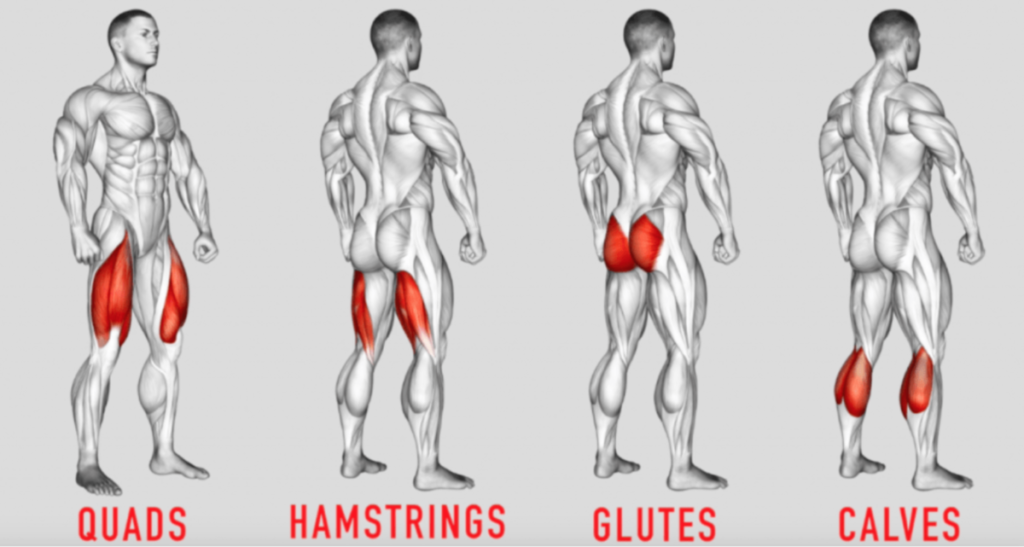
Barbell squatting can either be glute biased or quad biased depending on your stance. Quad biased strictly focuses on quads therefore its a high bar up and down movement, with your feet shoulder width apart and facing straight like a parallel line. For glute biased, you position the bar lower on your shoulders, and you want to think about the movement going back and forth because as you go more down you’re pushing your hips back. Your stance will be wider and toes must point out 45°. The depth of your squat also matters, quad biased allows you to go deeper in a squat having a greater knee angle while glute biased stops at a 90° angle and has a greater hip angle.
Example 1: High bar squat
The picture is an example of high bar squat, let’s say the knee ends up at an angle of 125° and the hip angle is 55°. The back angle would also be 55°. Since we are assuming a parallel thigh position to the floor, the hip angle and back angle will be the same because they are corresponding angles. Next we’re going to measure the moment arms which is the perpendicular distance from the joint to the vertical line of gravity that runs through the middle of the leg. The knee moment arm is the distance from the line of action of weight which is represented by the yellow dotted line to the knee. Meanwhile the hip moment arm is the distance from the line of action of weight to the hip flexor. Let’s assume the knee moment arm in this high-bar back squat is 7.5 inches long (or .19 m) and the hip moment arm that is 10.5 inches long (or .27 m). This means the overall thigh length is 18 inches long (hip lever arm + knee lever arm = full thigh length). In order to do this calculation we also need to figure in the weight of the barbell so we know how much force is pulling down. In this case, the guy is squatting 225 lbs which is equal to 1000.85 Newton’s of force.
We need to find the torque, which is the creation of a rotational force through the joints involved in a squat to create tension and stability. The formula to find the torque is τ = F r sin , but in this case we must multiply weight of the barbell multiplied by the length (distance) of the moment arm. Once we do the calculations of torque for high bar squat, we get:
Torque=.19m x 1000.85 N = 190.2Nm acting upon the knee joint at 125°
Torque= .27m x 1000.85N = 270 Nm acting upon the hip joint at 55°
Example 2: low bar squat
Another example is a low bar squat, this variation uses a bar position that is 2-3 inches lower on the back than the high-bar back squat technique. The bar commonly rests in the middle of the shoulder blade. A fun fact is that powerlifters commonly use this technique because it helps them lift heavier . In order to maintain balance the chest must learn forward to a greater degree. Therefore, the hip and back moment arm increases and shortens the knee moment arm. Now let’s assume the knee moment arm is now 5.5 inches (.14m), this would lengthen the hip moment arm to 12.5 inches (.32 m). We see from the diagram, the knee angle is 120° and hip and back angle is 40° (a more closed angle than the high-bar technique due to the more inclined chest position). If we use the same calculations to find the Torque, we get
Torque= .14m x 1000.85 N= 140.1 Nm acting upon knee joint at 120°
Torque= .32m x 1000.85N = 320.3 Nm acting upon the hip joint and pelvis at 40°
Comparing high bar squat and low bar squat
In both examples, we see the thigh is parallel to the floor. However in the high bar squat, the back is parallel to the shin while in low bar squat it is not the case. In a low bar squat, you must lean more forward therefore your head is surpassing your knees and you will have to look more down. High bar squats target the quad muscles more because you are going in a constant up and down movement, making the knee joint greater. On the other hand, a low bar squat targets the glute muscles more because as you go more down there is a constant back and forth movement causing an increase in hip joint and decrease in knee joint. This transmits a greater percentage of the load to the hips rather than the knees.
According to this analysis, the low-bar back squat is the most mechanically efficient technique because our bodies can squat more when the moment arm is longest at the hips. Click here to see a low bar squat
Conclusion
In conclusion, lifting weights can have lots of geometry due to angular positions and physics because of the forces acting upon those angles. The technique you use to perform a compound exercise can change the main muscle targeted. There’s lots of exercises that can be tweaked whether it’s by stance, degree, depth and grip. Don’t get it twisted , the gym isn’t all about math it’s also about having fun . The same way math helps us workout our brain, working out helps us workout our body.
Resources:
https://www.muscleandfitness.com/flexonline/training/working-all-angles/
https://squatuniversity.com/2016/04/20/the-real-science-of-the-squat/
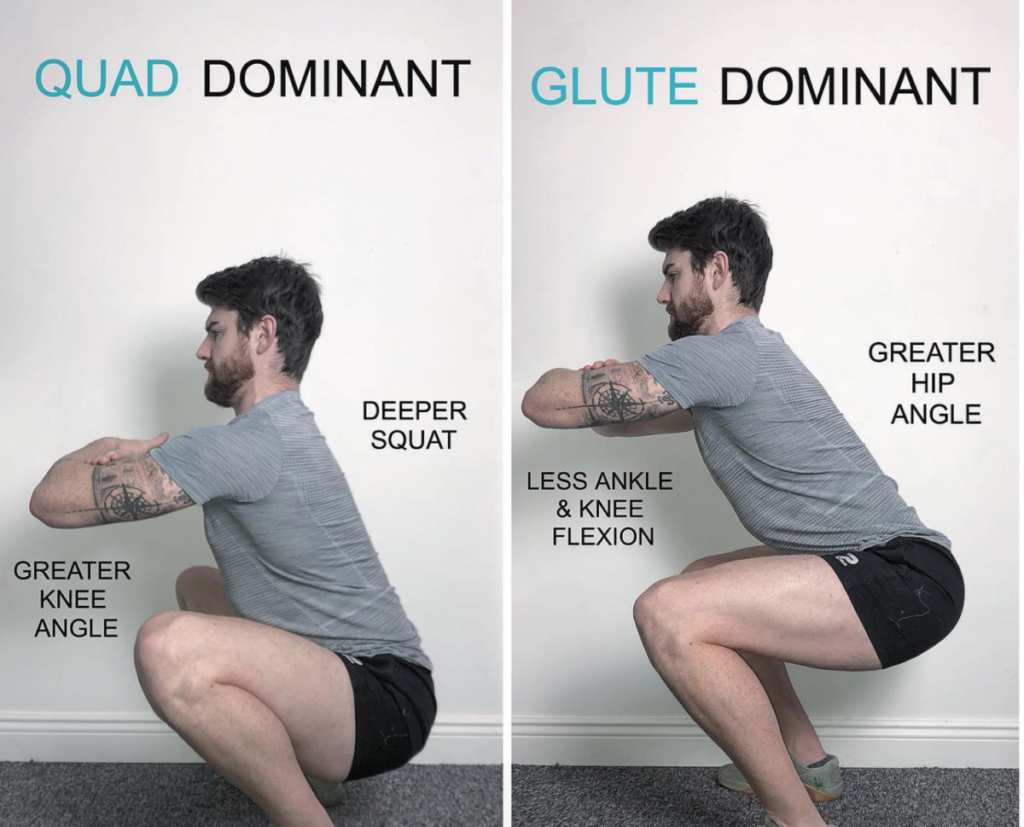
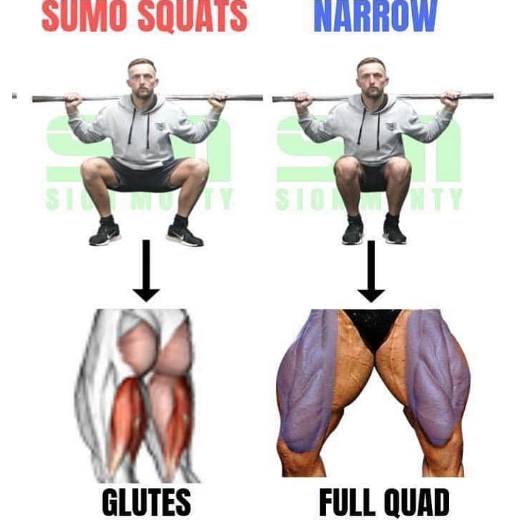
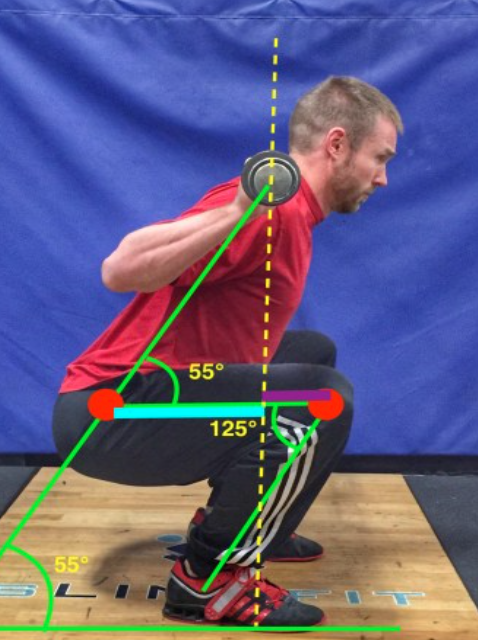
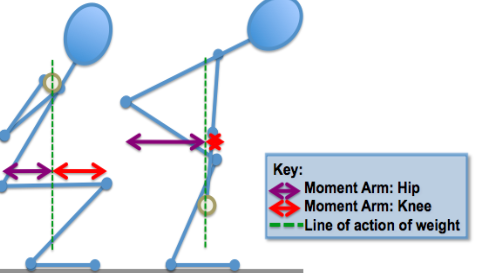
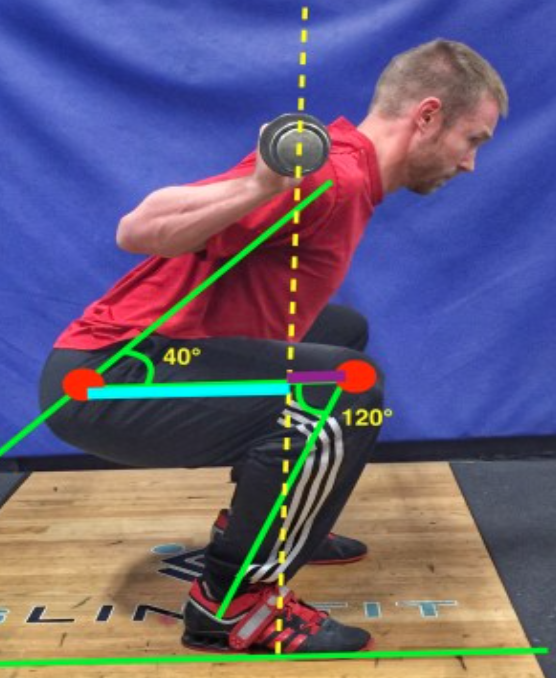




Leave a Reply